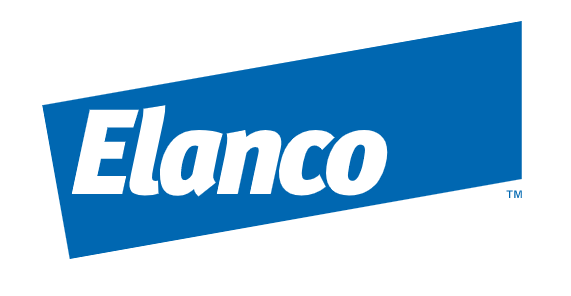



Coccidiosis in layer chickens
Control coccidiosis in layer chickens with the right toolsCoccidiosis has a constant presence in the commercial poultry industry, and it is capable of inflicting devastating economic losses to poultry operations worldwide: more specifically, $3 billion U.S. dollars annually1 and a potential for $14 billion in economic losses worldwide2. This economic impact has been felt primarily within the broiler industry, but the layer industry may begin to see a greater economic impact due to coccidiosis as well.

As the poultry industry starts to experience a swing back toward cage-free systems in egg production, it is important for egg producers to know the tools available to help them manage coccidiosis. We sat down with Dr. Alissa Welsher, Elanco food safety technical advisor, and poultry veterinarian Dr. Chase Miller, to get their thoughts on what management tools and resources are available to producers who are moving to cage-free production systems.
Q: How can history help inform today’s poultry veterinarians and egg producers who are facing increased coccidiosis challenges?
Dr. Miller: I will be the first to admit that I didn’t take my history courses very seriously in high school and college. The rapidly changing world of animal science and the constant updates in management practices, equipment, genetics, and environment monitoring makes the days of animal husbandry seem long gone. Since my high school and college days, I’ve developed an appreciation for the rich work history of egg producers and researchers that have gone before me. This appreciation has only grown stronger as the movement of cage-free housed birds has made its way back, front and center.

There is no doubt that the rise in concern of coccidiosis affecting bird health, welfare and performance comes from the industry-wide shift toward cage-free housing. Access to litter and infective coccidia oocysts has increased and talk of coccidiosis as a major issue in the egg industry has followed.
In the “History of Coccidiosis Control,'' written in 1990 the well-known Dr. W. Malcolm Reid discusses the many coccidiosis prevention methods were tried before anticoccidials became commercially available. He shares,“With one exception, these [prevention methods] have proved impractical or unsuccessful with the modern poultry industry. This exception relates to the use of wire floors or cages, which prevent birds from contact with feces contaminated by oocysts.3”
Because the relationship between floor-raised pullets and coccidiosis is not new, history can help be a guide as our forerunners in the industry battled with similar concerns half a century or more ago.
Q: Why has the movement back towards cage-free housing increased exposure to coccidiosis in chickens?
Dr. Welsher: With coccidiosis rarely an issue before, the layer industry is facing new challenges in this arena. Cage-free housing programs expose birds to an array of pathogens that only a small percentage (if any) may have encountered while in a conventional caged system.
Chickens are natural foragers and tend to peck at what is around them, including fecal matter. Conventional caged systems help support the prevention of infection with coccidia oocysts via the fecal-oral route. While cage-free systems are welfare-approved and allow the birds more freedom of movement and enrichment, they may be introducing a problem that was thought to be “in the past” in the layer industry.
Q: What have been the tools and/or resources used by egg producers to help prevent coccidiosis?
Dr. Miller: The persistent fight against coccidiosis in the layer industry boils down to exposure and immunity. Historically, the egg industry has used two primary methods to address coccidia exposure and immunity issues: vaccination and anticoccidials.
Live coccidia vaccines have proven to be of great benefit to layer pullets, because they allow immunity to develop to multiple species of relevant coccidia and can protect from mortality and performance losses. The benefit of vaccination comes by delivering a specified dose of coccidia in a manner that is consistent from bird to bird. Coccidia are given as sporulated oocysts that are ready to infect and cycle within the chick. The chicks then have time to cycle those organisms in approximately one-week intervals to build immunity that can hold up under a later coccidia challenge. Though it has brought on some added labor and management requirements, coccidia vaccination has been a useful technology.
Q: In addition to vaccines, what other methods of coccidiosis prevention should producers consider?
Dr. Miller: When resources are limited and the vaccination process can’t be executed to get vaccine-derived coccidia cycling at the right levels, I think it's important to look at other ways to build immunity against coccidia in pullets. This is where some more history can be a helpful guide.
As the poultry industry shifted toward widespread anticoccidial use in the 1950s and 1960s, more emphasis was placed on the immunity aspect of these interventions. These anticoccidials were new and expensive, and producers were interested in understanding if they could be fed for a shorter time without negative impacts on performance and bird health. One investigation into this concept determined that there were significant differences between anticoccidials in how they allowed for immunity to develop against cecal coccidiosis caused by Eimeria tenella4.
While some anticoccidials allowed no or very little immunity to develop during the course of a challenge, other anticoccidials did not interfere with the bird’s ability to develop protective immunity to E. tenella4. These programs have also been used in broiler breeder pullets and layer pullets as either a fixed dose or a step-down dose in the feed.
Vaccines help the pullets develop immunity to the coccidia, and anticoccidial programs rely on natural exposure to coccidia in the pullet house to help develop immunity. Though management is still an important factor in these programs, it moves some of the focus away from the pullet house and hatchery and puts it on the feedmill.
Dr. Welsher: We have seen that anticoccidials, while tried and true, have a limited number of cycles and some adverse reactions to keep coccidiosis at bay. With more regulations on usage, alternatives are needed. Vaccines have proven their efficacy albeit with some potential downfalls. There is hope that in combination with probiotics, vaccines can help significantly reduce the occurrence of this pathogen. As always, more research and understanding are needed. Until then, anticoccidials, vaccines and nutritional health strategies such as probiotics, amino acids and other feed additives seem to be the most effective tools we have to counter this ever-present threat.
Q: Is probiotic use a viable method for controlling cocci? If so, how do probiotics help protect chickens from harmful pathogens like coccidiosis?
Dr. Welsher: Vaccines and probiotics have been considered two of the novel methods to control coccidiosis without dependence on anticoccidial drugs (coccidiostats). Vaccines are relatively effective in controlling the disease. However, their efficacy could potentially be improved with concurrent use of probiotics.
The recent ban of sub-therapeutic doses of certain antibiotics as feed additives in the European Union has led to a general decline in animal health with increased incidences of enteric conditions5. This outcome has led researchers to begin exploring promising alternatives, including probiotics and potential combinations with live oocyst vaccines.
As we all know, the gastrointestinal tract serves as a barrier against potentially harmful pathogens. It also serves to digest and absorb nutrients, wherein a well-balanced microbiota is key for optimal performance. Probiotic therapy, or prophylaxis, is a natural approach to improve Intestinal Integrity due to the fact that these bacteria can be found, in some quantity, in the normal microflora of the host. Direct-fed microbials, or probiotics, are classified as live microorganisms that convey a health benefit to their host.
They can play many roles: re-seeding of the gut microflora after an insult, decreasing gut inflammation, improving animal performance, inhibition of pathogenic bacterial colonization, and much more. Several studies have shown disease prevention or immune enhancement resulting from oral administration of probiotics in poultry.6,7 The outcomes and areas of improvement often rely on the species used, most of which consist of one or many strains of the following: Lactobacillus, Bifidobacterium, Enterococcus, Bacillus, and Pediococcus.8
More recent additions to this market have been yeasts or yeast cell wall extracts. These have the benefit of interfering with pathogenic colonization, as well as improving such things as feed conversion and overall animal performance.
Q: Have there been studies conducted that show the benefits of using probiotics as part of a vaccine program?
Dr. Welsher: To support some of the claims probiotics offer, several papers have been published demonstrating protection against Eimeria acervulina infections in chickens when given a preventative treatment of probiotic bacteria. 9,10 The probiotic approach is also considered a more natural alternative and could be a viable alternative to anticoccidial drugs - following consumer trends shifting toward this preference.
Probiotics have the potential to enhance host defenses while protecting against colonization by harmful bacteria and maintaining Intestinal Integrity.11, 12, 13 Early and uniform administration of live oocysts of the vaccine results in a low-level infection, which is necessary for development of the immune system. However, this can cause an early reduction in growth. The potential consequences of coccidiosis vaccine administration at a young age could be overcome by proper and uniform delivery of the vaccine, as well as having a healthy intestinal tract colonized by a normal pathogen-free microbiota.8,10
Researchers hope that with this knowledge, probiotics may have the capabilities to attenuate the negative consequences of early vaccine administration. For example, Ritzi and colleagues13 were able to show that probiotics with a coccidiosis vaccine resulted in an enhanced protected effect against Eimeria-challenged birds (challenged at 15 days old). Lower lesion scores and higher weight gains were also seen.
Another study, performed by Klein,14 showed that a probiotic in combination with a live oocyst vaccine may lead to improved performance during vaccination over the vaccine group alone and was indistinguishable from protection conferred by feeding an ionophore in the presence of a field strain of Eimeria. This group also noted a potential improvement in vaccine efficacy that could potentially stimulate immunity and improve intestinal health.
Q. How are animal health companies, such as Elanco, able to help egg producers as they begin to navigate the change to cage-free housing?
Dr. Welsher:
Animal health companies can help through education, experience and products. There are many technical experts on Elanco’s Poultry team who are able to help walk barns, make sure management is routine, and offer solutions and advice. As producers navigate through the change to cage-free housing, it’s important that everyone in the industry works together. Elanco is here for our customers as a resource and a helping hand to aid them in the best possible ways.
Contact your Elanco sales representative to discuss ways to prevent cocci in your layer production.
| References | ||||
|---|---|---|---|---|
| [1]Kogut MH, Swaggerty CL. Effects of prebiotics and probiotics on the host immune response. In: Callaway TR, Ricke SC (eds) Direct-Fed microbials and prebiotics for animals: science and mechanisms of action. Springer, Berlin, 61–72. 2012. | ||||
| [2]Blake D P, Knox J, Dehaeck B, et al. Re-calculating the cost of coccidiosis in chickens. Vet. Res. 2020;51:115. https://doi.org/10.1186/s13567-020-00837-2. | ||||
| [3]Reid W. History of Avian Medicine in the United States. X. Control of Coccidiosis. Avian Diseases, 1990;34(3):509-25. https://doi.org/10.2307/1591239. | ||||
| [4]Karlsson T, Reid W. Development of Immunity to Coccidiosis in Chickens Administered Anticoccidials in Feed. Avian Diseases, 1978;22(3):487-95. https://doi.org/10.2307/1589304 | ||||
| [5]Castanon JI History of the use of antibiotic as growth promoters in European poultry feeds. Poult Sci 2007;86:2466–71. | ||||
| [6]La Ragione , RM, Narbad A, Gasson MJ, et al. In vivo characterization of Lactobacillus johnsonii FI9785 for use as a defined competitive exclusion agent against bacterial pathogens in poultry. Lett. Appl. Microbiol. 2004;38:197-205. | ||||
| [7]Koenen ME, Kramer J, van der Hulst R, et al. Immunomodulation by probiotic lactobacilli in layer- and meat type chickens. Br. Poult. Sci. 2004;45:355-66 | ||||
| [8]Dalloul R A, Lillehoj HS, Shellem TA et al.,Enhanced mucosal immunity against Eimeria acervulina in broilers fed a Lactobacillus-based probiotic. Poult. Sci. 2003;82:62-66. | ||||
| [9]Dalloul RA, Lillehoj HS. Recent advances in immunomodulation and vaccination strategies against coccidiosis. Avian Dis 2005;49:1–8. | ||||
| [10]Stringfellow K, Caldwell D, Lee J, et al. Evaluation of probiotic administration on the immune response of coccidiosis-vaccinated broilers. Poult Sci 2011;90:1652–58. | ||||
| [11]Hume ME Historic perspective: prebiotics, probiotics, and other alternatives to antibiotics. Poult Sci 2011;90:2663–69. | ||||
| [12]Williams RB (2002) Anticoccidial vaccines for broiler chickens: pathways to success. Avian Pathol 31:317–53. | ||||
| [13]Ritzi M, Abdelrahman W, van-Heerden K, et al. Combination of probiotics and coccidiosis vaccine enhances protection against an Eimeria challenge. Veterinary Research 2016;47:111. | ||||
| [14]Klein A, Effects of probiotic administration during coccidiosis vaccination on performance and lesion development in broilers. Texas A&M Poultry Science. 2009. | ||||










